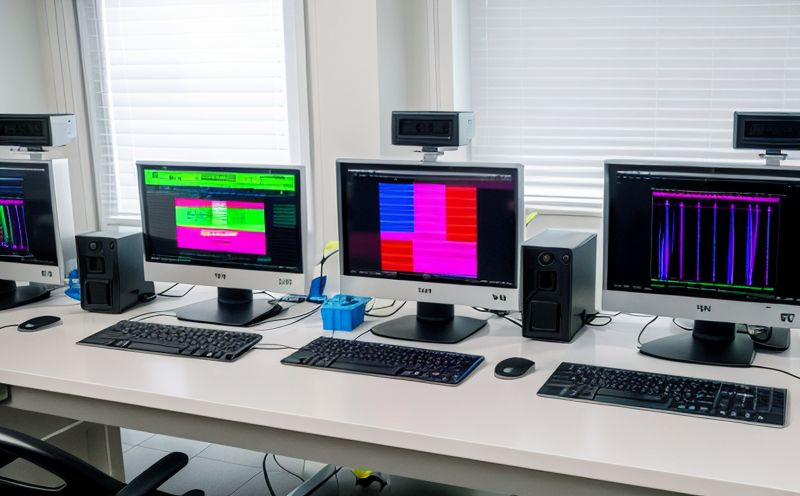ISO 21703 Antiviral Performance Testing of Materials
The ISO 21703 standard provides a robust framework to evaluate and quantify the antiviral performance of materials used in various applications. This service is particularly relevant for sectors such as healthcare, medical devices, textiles, and consumer goods where antimicrobial properties are crucial. The testing protocol aims to determine the ability of materials to inhibit viral replication or inactivation over time.
The process involves exposing a standardized specimen to a known concentration of target viruses under controlled conditions. Subsequent analysis measures the reduction in viral load as an indicator of antiviral efficacy. This approach ensures that any material claiming antiviral properties meets stringent scientific standards and can be relied upon for its advertised performance.
Understanding the nuances of ISO 21703 is essential not only for compliance but also to ensure product safety and effectiveness. For instance, in the healthcare sector, materials with superior antiviral properties can significantly reduce the risk of pathogen transmission. In consumer products like textiles or personal protective equipment (PPE), such testing helps manufacturers select materials that offer reliable protection against viral contamination.
Testing under ISO 21703 is not merely a compliance exercise but also a critical step in product development and quality assurance. By incorporating this process into the R&D phase, companies can identify optimal material combinations early on, reducing time-to-market and associated costs. Additionally, it provides a clear roadmap for achieving regulatory approval, which is increasingly important as more stringent global standards emerge.
The test protocol includes several key steps: preparation of the specimen, inoculation with specific viruses, incubation periods to observe viral activity, and quantification techniques to measure the extent of antiviral efficacy. The choice of viruses for testing can vary based on the intended use of the material, ensuring relevance and applicability.
Given the complexity of this testing method, it is advisable that laboratories specializing in biological and microbiological testing possess the necessary expertise and equipment. This includes advanced viral culture facilities, precise measurement instruments, and trained personnel capable of interpreting results accurately. The laboratory must also adhere strictly to ISO 21703 guidelines to ensure consistent and reliable outcomes.
The results from such tests are typically reported quantitatively using units like logarithmic reductions (LR), which provide a clear measure of the antiviral performance. These figures can then be used to compare different materials or to track improvements over time, aiding in continuous product enhancement.
| Applied Standards |
|---|
| - ISO 21703: Antimicrobial activity of materials and products - Determination of antiviral performance |
This standard ensures that all tests are conducted under uniform conditions, enhancing the credibility and comparability of results across different laboratories.
Applied Standards
- ISO 21703: Antimicrobial activity of materials and products - Determination of antiviral performance
The ISO 21703 standard is widely recognized for its comprehensive approach to evaluating the antiviral properties of materials. It specifies the conditions under which specimens should be exposed to viruses, the methods used to assess viral inactivation or inhibition, and the criteria for determining successful testing outcomes.
One of the key features of ISO 21703 is its flexibility, allowing laboratories to adapt the protocol to specific applications while maintaining scientific rigor. This adaptability ensures that the test remains relevant across various industries, from healthcare products to environmental surfaces.
The standard also emphasizes the importance of selecting appropriate viruses for testing based on their relevance to the material's intended use. For example, in a hospital setting, testing might focus on common pathogens like influenza or norovirus, whereas in food packaging applications, hepatitis A or E may be more relevant targets.
Benefits
The benefits of ISO 21703 antiviral performance testing extend beyond regulatory compliance to include significant advantages for both manufacturers and end-users. For manufacturers, this service offers a competitive edge by ensuring that their products meet the highest standards of safety and effectiveness.
Firstly, successful completion of these tests can lead to faster product launches, as it provides conclusive evidence of antiviral efficacy. This is particularly beneficial in fast-moving consumer goods markets where rapid market entry can translate into significant first-mover advantages. Secondly, compliance with ISO 21703 helps manufacturers avoid costly recalls and legal issues associated with ineffective products.
For end-users, the assurance that a product has been rigorously tested according to international standards provides peace of mind. In healthcare settings, for instance, knowing that medical devices or personal protective equipment have passed ISO 21703 testing can enhance trust in their reliability and safety. This increased confidence is crucial given the critical role these products play in preventing viral infections.
Beyond immediate benefits, investing in ISO 21703 testing also contributes to long-term sustainability by fostering innovation and continuous improvement. By regularly monitoring antiviral performance through this rigorous testing method, manufacturers can identify areas for enhancement and stay ahead of emerging threats or changes in regulatory requirements.
Quality and Reliability Assurance
Ensuring the quality and reliability of ISO 21703 testing is paramount to maintaining credibility within the industry. To achieve this, laboratories must adhere strictly to the specified protocols and maintain high standards in specimen preparation, viral inoculation, incubation periods, and final quantification.
- Stringent adherence to ISO 21703 guidelines
- Use of calibrated equipment for accurate measurements
- Standardized methods for preparing and handling specimens
- Detailed documentation of all testing procedures and results
Regular calibration and validation of instruments are essential to prevent any measurement inaccuracies. Additionally, personnel involved in the testing process should undergo continuous training to stay updated on best practices and any changes in the standard.
The reliability of test results is further enhanced through rigorous quality control measures. These include internal audits, peer reviews, and comparisons with results from other reputable laboratories conducting similar tests. By implementing these stringent protocols, laboratories can ensure that their findings are accurate, reproducible, and trustworthy.





